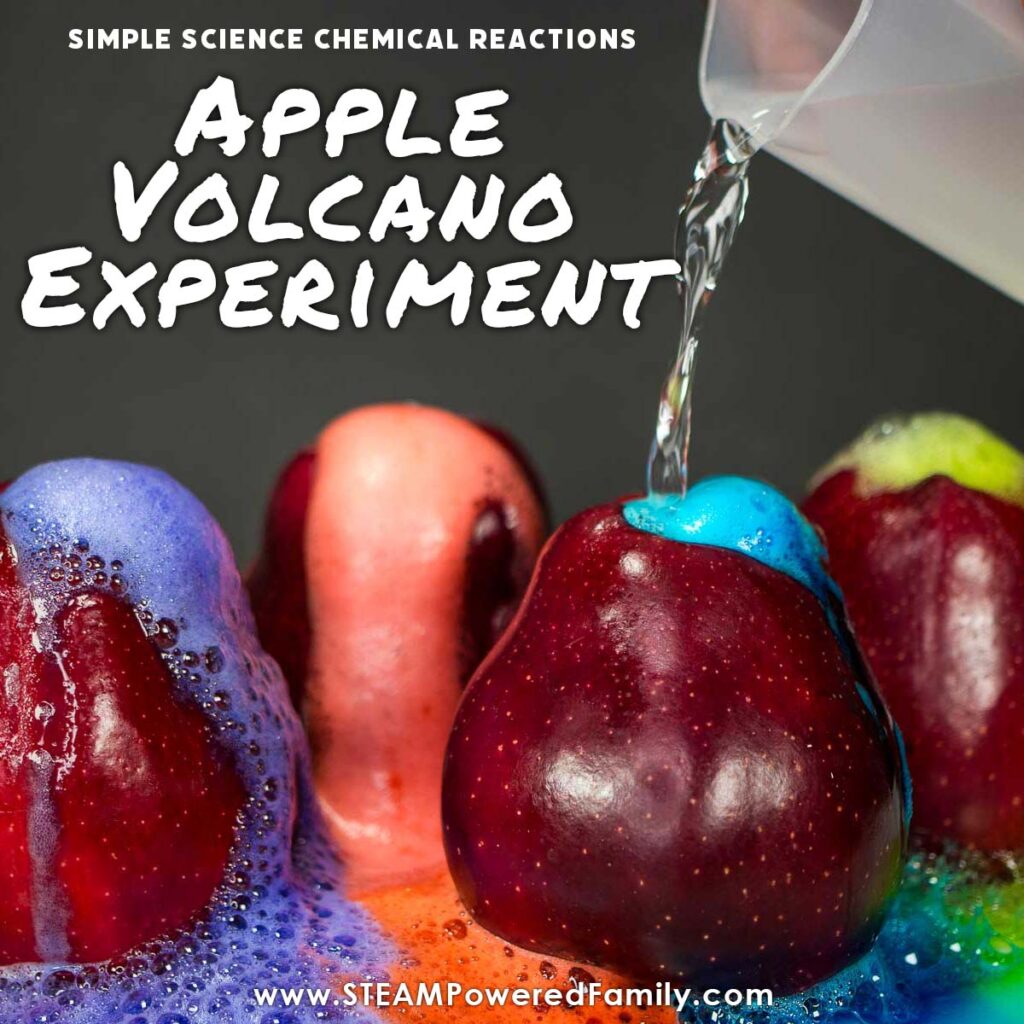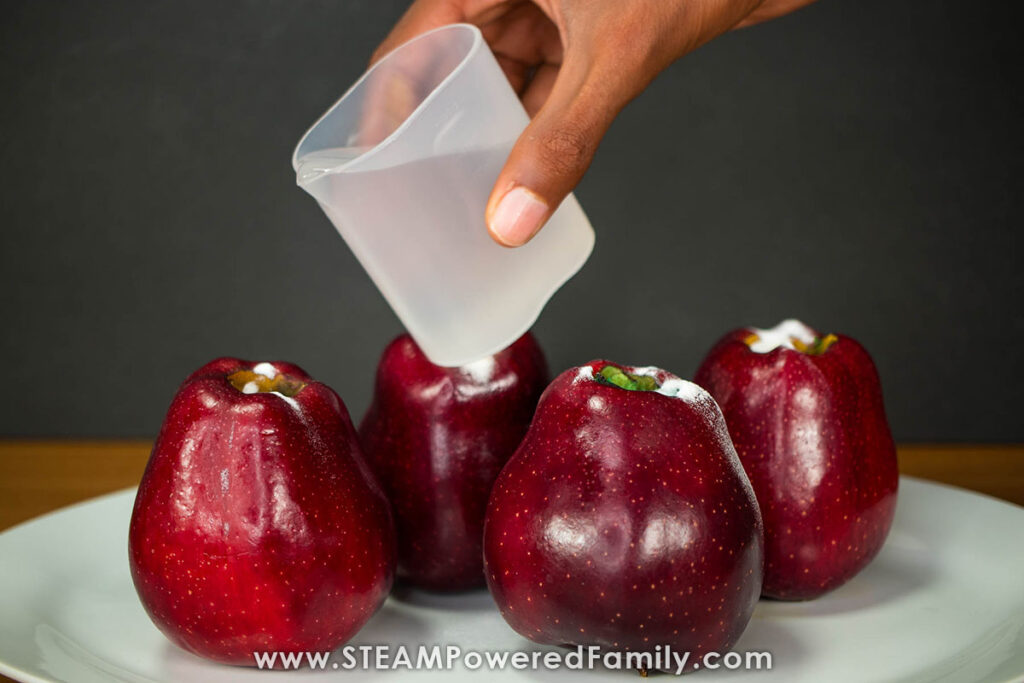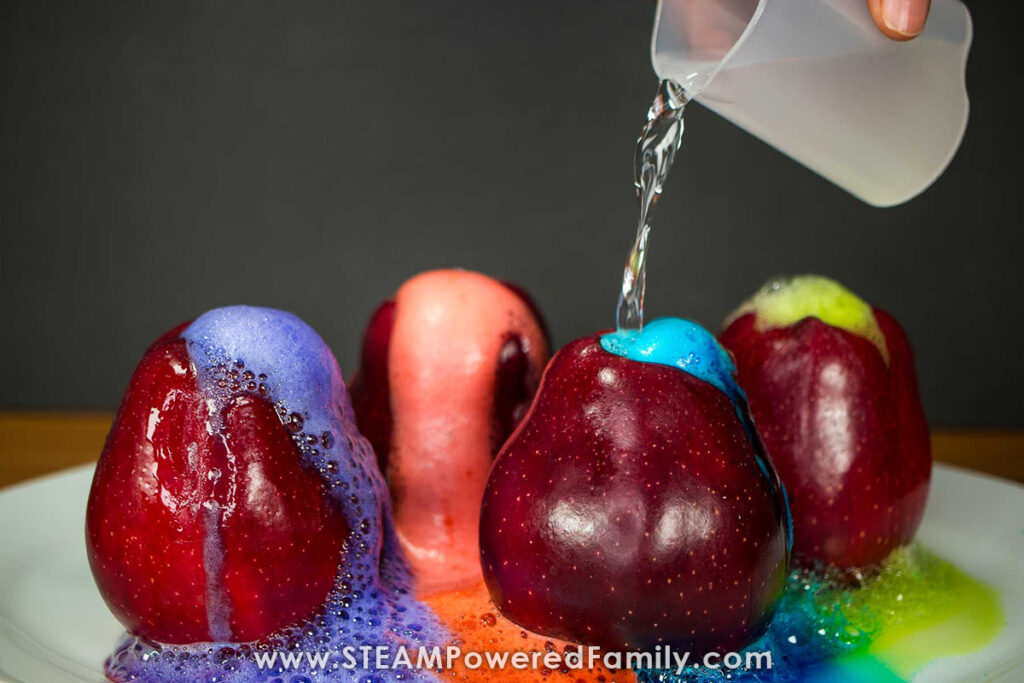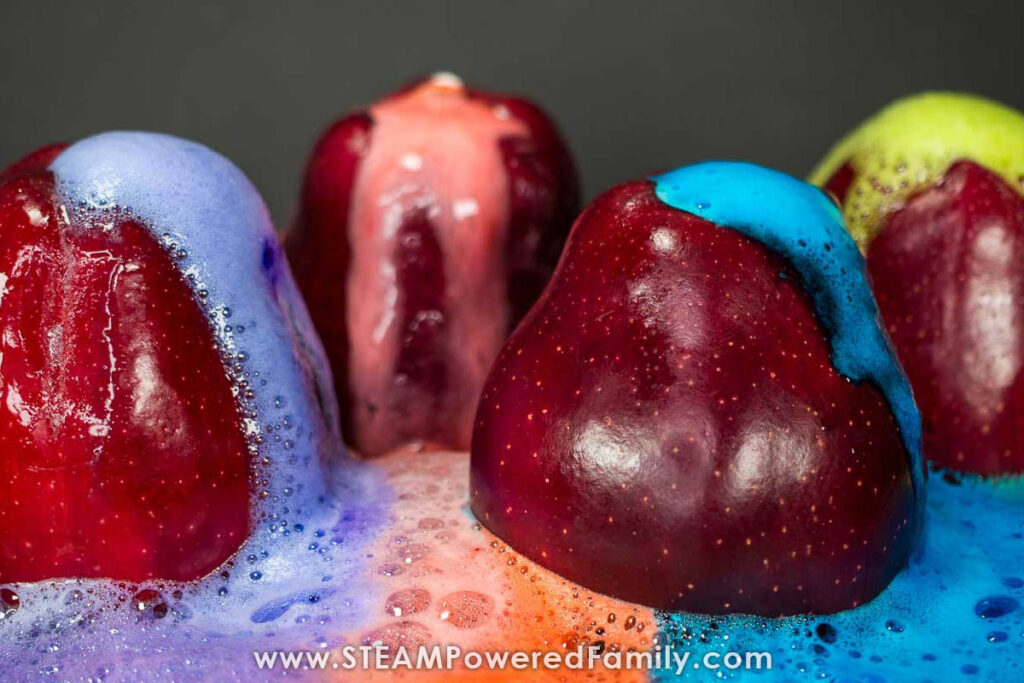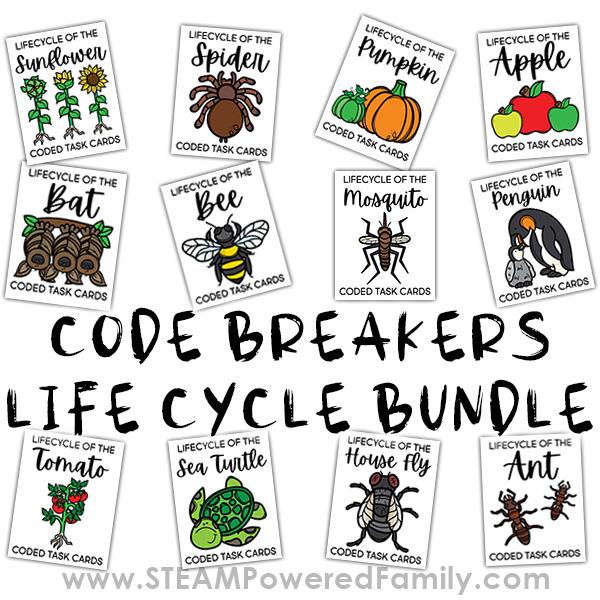Apple Volcano Experiment
Kids love a great volcano experiment. These fizzy, fun eruptions are pure science fun and help to foster that insatiable curiosity and passion for learning that is so important in students. In the past we have made a Pumpkin Volcano, Volcano Slime, and a Lemon Volcano. But the kids still want more volcanoes! I never want to dampen that love of science, so today we are doing an Apple Volcano Experiment. This science is perfect for fall, back to school, and apple unit study, or just for fun!
Erupting Apple Volcano Experiment – Simple Chemistry
Disclaimer: This article may contain commission or affiliate links. As an Amazon Influencer I earn from qualifying purchases.
Not seeing our videos? Turn off any adblockers to ensure our video feed can be seen. Or visit our YouTube channel to see if the video has been uploaded there. We are slowly uploading our archives. Thanks!
Apple Volcano Video
The best way to learn about this science activity is to see it in action. Check out our video tutorial for this activity. If you can’t see the video, it could be your firewall or adblockers are blocking the feed. You can also find this video with closed captioning on the STEAM Powered Family YouTube Channel.
Apple Volcano Science
These experiments are a fantastic way to explore chemistry with your elementary students. Chemical reactions are always so popular, make learning fun, and provide great excitement for kids.
In these chemistry experiments, we are exploring an acid-base reaction. When we did our Lemon Volcano, the lemon juice in our lemons was our acid with a pH of 2. However, apples have a pH of 3.5 which is only moderately acidic. So we need to add some acid to get our reaction. We had to add acid to our pumpkin volcano as well.
So what is our acid? Vinegar!
Yup, we are exploring the always popular Baking Soda and Vinegar chemical reaction!
Vinegar (Acetic Acid) has the chemical formula CH3COOH . Baking Soda (Sodium Bicarbonate or Sodium Bicarb) is a base and has the chemical formula NaHCO3 . A chemical reaction occurs between two or more substances that interact and change to form a new substance. During this reaction one new substance or product is sodium acetate ( CH3COONa ). Sodium acetate is made of 1 sodium ion, 2 carbon atoms, 3 hydrogen atoms, and 2 oxygen atoms. The other products are water ( H2O) and carbon dioxide ( CO2 ). Carbon dioxide is the gas that causes the bubbling during the reaction.
Chemical Formula of Vinegar – Baking Soda Chemical Reaction
CH3COOH(l) + NaHCO3(s) →CH3COONa(aq) + H2O(l) + CO2(g)
acetic acid (l) + sodium bicarbonate (s) -> sodium acetate (aq) + water (l) + carbon dioxide (g)
As you can see from the formula we have changes in the states of matter as those molecular bonds break and form new molecules. This is a great demonstration to explore this principle.
The optional additions to this experiment are food coloring and dish soap. The food coloring just makes it look cool and has no scientific addition to the experiment. However, the dish soap is a surfactant that creates surface tension. Normally the gas would quickly escape from the liquid, but the dish soap helps trap the gas and form bubbles that are more stable, which creates a more foamy, longer lasting eruption.
Apple Volcano Science Experiment
Materials
This is a very simple kitchen science experiment. All you need is:
Apples (we picked some that had a great volcano shape when upside-down)
Baking Soda
Vinegar
Corer or Knife
Spoon (teaspoon is perfect, for the baking soda)
Pipette, syringe, or measuring cup (for the vinegar)
Tray, dish, pie plate, or bin with a lip
Food coloring (optional but gives a more colorful reaction)
Dish soap (optional)
Safety Note: When coring the apple, always use caution and adult supervision. Whether you are using a knife or an apple corer, they are sharp. Depending on the age and ability of your students, you may wish to core the apples before hand. Also, ensure proper adult supervision is provided to ensure the acid (vinegar) is used appropriately and safely.
Directions
Before we start, encourage students to make predictions, record observations, and explain the scientific principles behind the reaction as they complete this experiment. The more we can reinforce the scientific method, the more it will become second nature for students to think in this critical manor.
First we need to prep our apples. This means removing part of the core. You can use a knife or an apple corer for this. We used an apple corer as we found it easier for the kids to use. You only need to go down part way into the core. We went in about 1 inch. Most people would do this from the top of the apple, but with our apples, we thought they looked more like volcanoes if we cut from the bottom of the apple.
Pro Tip! We picked apples that were wide on the top and narrow at the base. Our kids noted, that when we turned these apples upside-down they looked much more like a volcano than the more round apples. A great application of creative thinking!
Place the apple on a tray or plate with a lip to catch any spills during the eruption.
Using a spoon, add some baking soda into the hollow cavity of the apple. Younger kids may find it easier to use a funnel for this step. You do not need an exact measurement. That is the great part of this experiment, there is a lot of flexibility.
NOTE: If you removed the entire core of the apple, you may need to use a full tablespoon or more of baking soda so it overflows.
If you want to add the optional food coloring or dish soap add that on top of the baking soda. For extra vibrant color we used two drops of food coloring (gel), then we found a good sized drop of dish soap was perfect.
Reaction Time!
Now, it’s time for action! Let’s get this volcano erupting!
Once the kids are ready, use a syringe, pipette, spoon or measuring cup, then slowly pour vinegar into the hollow cavity of the apple.
As the vinegar comes into contact with the baking soda, the chemical reaction will immediately start. As it releases gas this creates a foaming eruption of “lava” from the apple, resembling a volcano.
Observe and discuss the characteristics of the eruption, including the foam and the release of gas.
You can reuse the apples a few times, simply clean them up, wipe down the surface of the apple, and empty the dish. Then set up again for more apple volcano eruptions!
Variables
For the next volcano experiments, why not play with the variables? You could try:
Exploring Surface Tension: Do one eruption with dish soap and one without dish soap. Compare the reactions and notice the differences.
Changing Ratios: Try different amounts of baking soda and vinegar (including changing the ratios), to see how it changes the intensity of the eruption. Students may find it useful to use a stop watch to time the reactions to get a more accurate recording of the changes in the reactions.
Different Apples: Try different types of apples. You may have noticed some apples are more sweet, while other are tart. A different type of apple may have a different pH, or, as we found, the different shapes of apples, can change the lava flow. Compare the eruptions.
Different Vinegars: Test different types of vinegars (especially different strengths) to see how it impacts the reactions.
Apple Science Experiment Extension Activities
Create an Apple Rainbow
For a fun twist, set up multiple apples and add a couple of drops of food coloring in different colors to each apple, then make them erupt at the same time. The mixtures created in the water between the different colors are beautiful!
Is it Exothermic or Endothermic?
Have students use an infrared thermometer to test for a temperature change during the reaction and determine if it is exothermic or endothermic.
Weigh the Reaction
Place the plate on a scale and take a weight reading before and after the experiment to see what the weight change is from the chemical reaction. Make sure you include the vessel with the vinegar during the initial weight reading, and place the empty vessel back on the scale for the final reading to get accurate results.
Apple Seed Dissection – Exploring the parts of the Apple
Save those apple seeds from the cores you removed for this experiment, then using a microscope (or a magnifying glass), dissect the seeds and look for the different parts of the apple seeds. Look for: the seed coat, endosperm, micropyle, cotyledon, and embryo. Then discuss the apple life cycle.
Life Cycle Code Breakers Printable
Try our Life Cycle Code Breakers activity, which includes the Apple Life Cycle.
Enjoy exploring the wonderful world of Apples and the exciting Apple Volcano Experiment!


